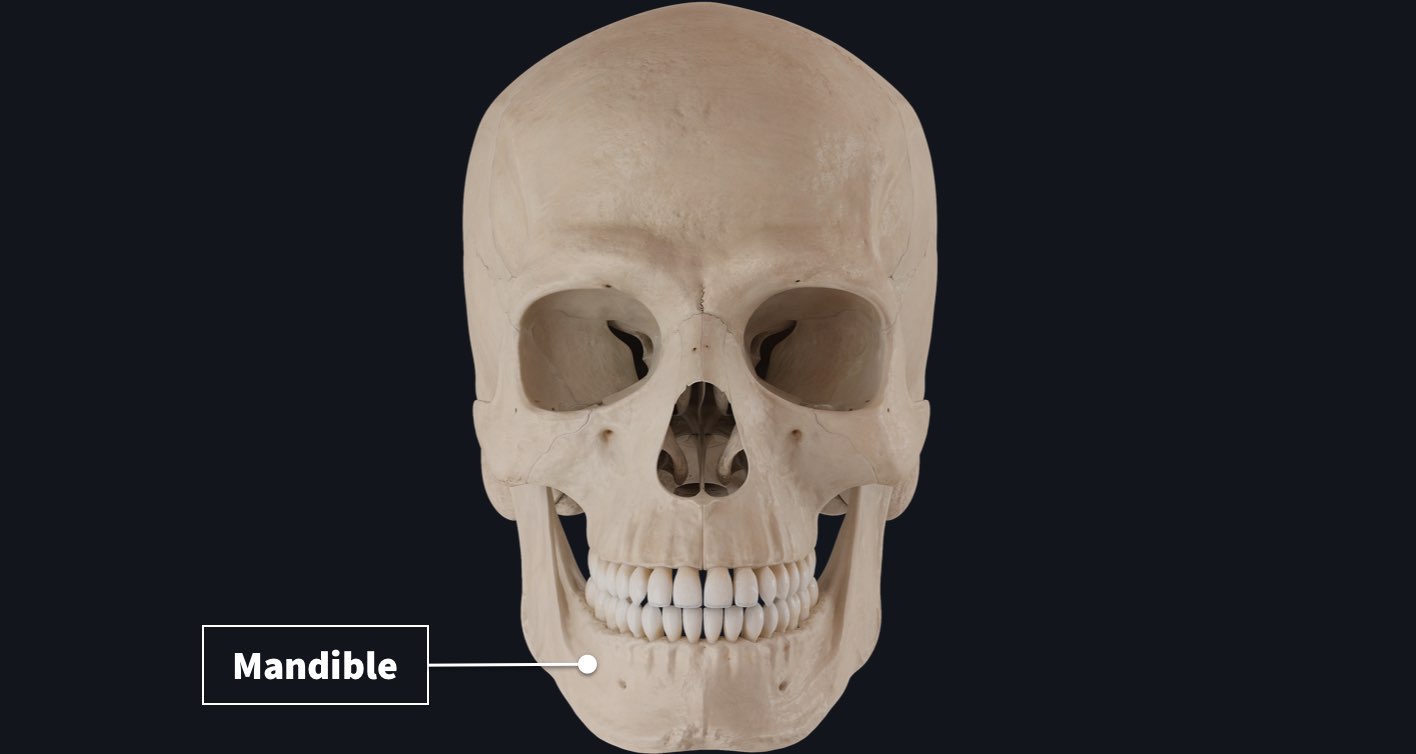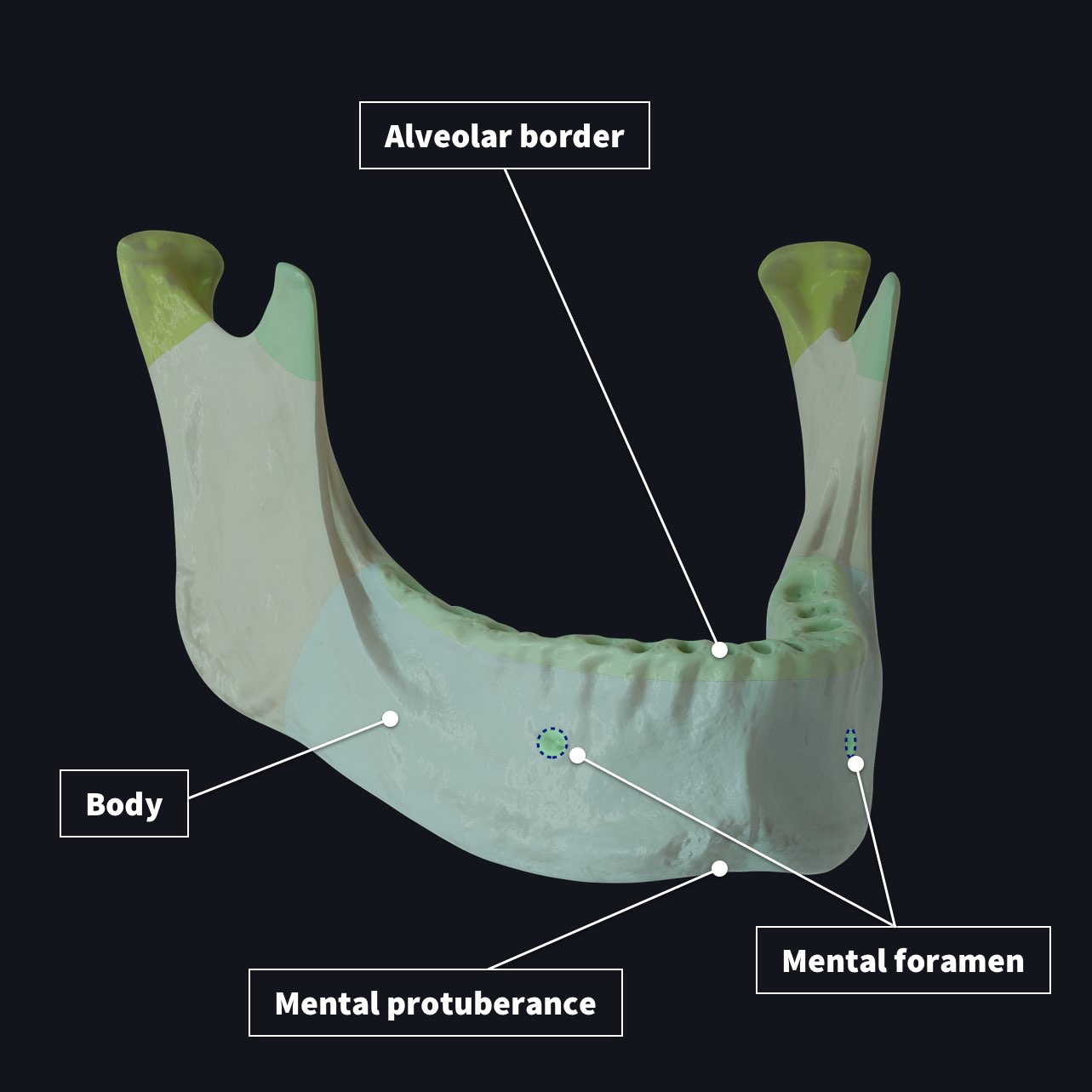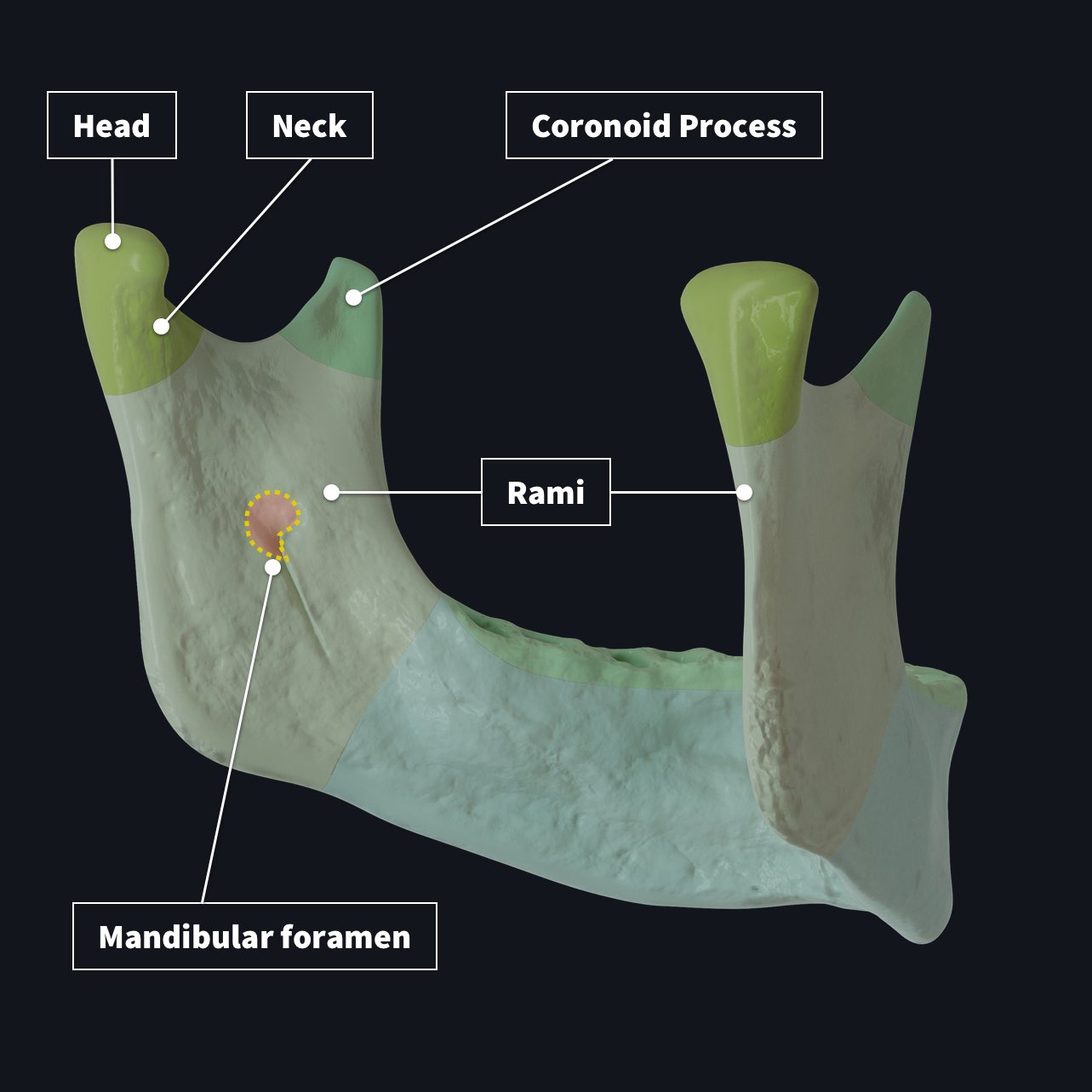
In 2015, scientists working in Ethiopia found the earliest known fossil of the ancestral line of humans. This fossil was of the mandible, also known as our jawbone. It was about 2.8 million years old and still contained several teeth! This single bone provided scientists with endless information when studying human evolution ?.
The mandible is the largest and strongest bone of the face. It creates our lower jaw and holds the lower teeth ?. The bone articulates with the temporal bone to form the temporomandibular joint, allowing us to talk, eat, and yawn ?.

Two main parts make up the mandible:
- The horizontal body
- Two vertical rami
The two meet each other on either side and form the angle of the mandible.
Body
The body is curved similar to a horseshoe or magnet, and has two borders ?…
- Alveolar border: contains lower teeth sockets
- Base: attachment site for digastric muscle
In the midline of the mandible is the mandibular symphysis. During development, this is the site of fusion for the two halves. The mental protuberance forms in this area to create the shape of the chin.

Rami
The two rami project upwards from the angle of the mandible. They are made up of several landmarks…
- Head: articulates with the temporal bone to form temporomandibular joint
- Neck: supports the head and is the site of attachment for lateral pterygoid muscle
- Coronoid process: attachment site for the temporalis muscle
Foramina
Within the mandible, two main foramina form openings through the bone for neurovascular structures to travel through.
- Mandibular foramen: located on the internal surface of the ramus. The inferior alveolar nerve and inferior alveolar artery pass through it. Through this foramen, they then travel into the mandibular canal, and then exit at the mental foramen.
- Mental foramen: located on the external surface of the body, below the second premolar tooth. The inferior alveolar nerve and artery exit through it. Once the nerve exits, it then becomes the mental nerve.
Virtually peel back the layers of the head with the world’s most advanced 3D anatomy platform, including bone parts, surfaces and landmarks. Download the latest version of Complete Anatomy today and try it for FREE.
